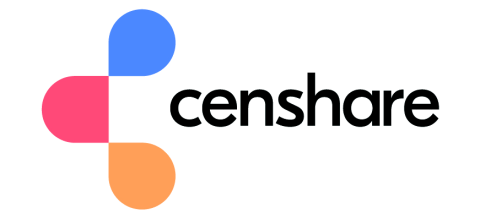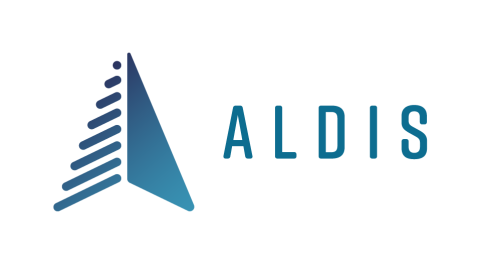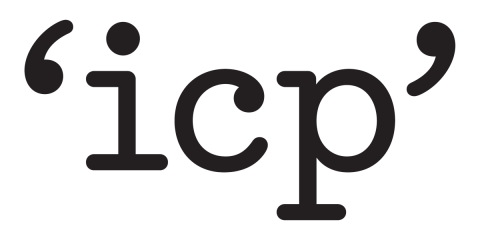DAM Los Angeles 2023

We are busy developing an exciting agenda for DAM Los Angeles 2023 so keep your eyes peeled for details. Register your interest for the event to be the first to hear about new sessions and speakers!
In the meantime, check out the first sessions announced:
Preparing for the Automation Invasion – What's the Future Role of DAM Among these Generative Systems
With Generative Artists and Creative Coders programmatically enriching assets across the DAM, we find ourselves questioning the need for metadata and, frankly, whether or not we are keeping the resulting assets at all.
Join Charles Duncan, formerly Disney now Creative Technologist at Omnicom for a visual journey of how your brand will inevitably be impacted by each of the areas of automation including AI generated images and dynamic assembly of visual experiences – and the transparency of how all this is assessed with respect to sales.
In the Trenches – the National Football League's (NFL) Extensive Reboot through New Technology and Change Management to Develop Workflows for the Future
The NFL recently moved into a brand-new broadcast facility, including the deployment of a heavily virtualized environment and a new asset management system. The overall project was massive with multiple API integrations and a complete migration from a legacy asset management system consisting of almost 1 million assets.
What took place was a technology overhaul to drive up efficiencies, and to enable creative freedoms across all NFL business units.
Brad Boim, Senior Director, Post-Production & Asset Management at the NFL Media Group will share what this evolution into the future means for DAM and for the NFL’s ability to provide high-quality content to their fans.
How to Ensure that Your DAM Doesn't Sit on a Shelf and Gather Dust
The concept of a DAM is very exciting for everyone that has ever lost a hard drive or spent 30 minutes searching for something on a shared server. A DAM can be even more exciting for those participating in a strategic function and planning for the future.
Who wouldn’t want “somewhere” to keep “everything” in a way that is searchable and findable? But where can you go from there? Who needs to be involved? How do you plan for all this change after a DAM has been purchased?
Engaging every possible department and stakeholder in DAM implementation and integration is critical to successful adoption.
Digital asset management and preservation may not be essential for the day-to-day job activities of many people in a company or organization (not even those in IT). However, everyone can be a stakeholder – everyone can be engaged and excited.
The easiest way to have many wins with DAM implementation is showing people how their workflows can be streamlined using the DAM.
In this session, Kat Fanning, Digital Asset Management Librarian at Oneida Nation Enterprises will share the pain of having to pause, pivot, and scale up the entire scope of the DAM project. By engaging stakeholders from all potential use cases, we’ve found a way to maintain momentum and excitement for the use of the DAM, despite setbacks, by engaging Marketing, Creative Services, Communications, IT, and more - by anticipation of need.
The migration of digital assets into the DAM has expanded from creative assets on one shared server to hard drives, past photoshoots on CDs throughout the offices, third party services, and verifying rights to all the assets through documentation maintained by our legal team.
This presentation is a walkthrough of how we “built the plane while flying it” when it comes to DAM implementation – and how we anticipate future needs by preparing for scalability and open access to the DAM.
How Best to Meet the Demands of a Growing Business – Maintaining a Core Structure at its Heart
So often as digital asset managers we get stuck with someone’s idea of how DAM should function. We find that we need to unravel what was started and take another approach to make the DAM more flexible and/or more structured. This is difficult and complicated to do in isolation so it’s best to build a picture of the requirements to understand the user-base:
- Who are the users?
- What do they need to do?
- What must the DAM be capable of delivering?
We’ll hear insights from Kathleen Cameron, Digital Asset Program Leader, Google Marketing Operations that will help you to create a flexible and nimble program that will grow and grow with your organization while keeping in mind rights and governance.
Kathleen will explore the benefits of having and maintaining a requirements document -including creating a communications’ strategy shared with all stakeholders.
Evolving the Ecosystem: Meeting the Escalating Demand for Mental Health Support – the Role of the DAM in Continuing Huge Integrations on a Global Scale
Headspace Health now provides the world’s most accessible, comprehensive digital mental health platform referencing nearly 100 million lives across 190+ counties through direct-to-consumer business and over 2,500+ enterprise and health plan partners around the globe.
What role does the DAM have in this major new global organization?
In this session, David Finley, Senior Manager, Digital Asset Management at Headspace Heath, will explain how positioning the DAM as the centerpoint of the ecosystem has:
- Increased quality and productivity through improved and automated workflows
- Delivered higher value across more stakeholders within the ecosystem
Mergers create new needs in every function of an organization, including Asset Management. We’ll hear the challenges of merging growth plans and the many decisions along the way of what to do with two different DAM systems.
A series of challenges quickly emerged following the merger between Headspace and Ginger in October 2021, a new B2B unit and multiple DAM systems with internal and external users requiring access.
This session will focus on how the organization, growing quickly and with a limited budget, satisfied everyone’s needs – through integrations. It will highlight:
- Vendor integrations – how they created a segregated DAM securely separating B2B from legacy Headspace while operating on the same engine, as well as reducing costs while offering system continuity
- Integration with B2B – from development through training and implementation to capture
- Integration with B2B’s clients – giving a large quantity of distinct clients their own secure home to receive ongoing B2B campaigns
Building the Foundations of a Strong and Multi-Functioning DAM – Bringing Together Multiple Data Sources
The Huntington Library, Art Museum, and Botanical Gardens is a research and educational institution that shares its world-renowned collections with over a million onsite and online visitors each year. Items in The Huntington's vast and diverse collections create a unique opportunity for scholars, students, teachers, and visitors to deepen their understanding and inspire their creativity in art, history, literature, and botanical science.
So how is it possible to build a DAM which does justice to such a diverse collection with millions and millions of items?
Join Mario Einaudi, Head, Digital Collections and Imaging Services, Library Division and Yvonne Lee, Head of Integrated Systems at The Huntington Library, Art Museum, and Botanical Gardens who’ll discuss the strategies – successful and not – in bringing together multiple data sources, a profusion of metadata profiles, and a slew of programmatic contexts into one cross-institutional and cross-functional system. This might sound straightforward but add into the mix a patchwork of data governance, workflows, permissions, and configurations, all of which require some standardization, if a successful DAM, open to all users, is the objective.
Community and Collaboration: Approaches to Break Down the Silos and Bring About Departmental Alliances
The University of Southern California kicked off an enterprise DAM implementation in February 2022 and has since been making the shift away from a patchwork of file sharing tools to a unified digital asset management program. The DAM is breaking down silos and integrating marketing and communications teams across campus from engineering to law to business, while also simplifying processes for individual departments.
In this presentation, Nina Damavandi, Digital Asset Manager at the University of Southern California will address four key challenges faced, namely:
- Defining and adopting a shared metadata standard to harmonize how we describe assets
- Providing consistent information on releases and IP captured in rights metadata
- Establishing decentralized governance
- Encouraging people-first change management
The approaches the university took to each of these challenges helped to build a DAM program that reflects the organization as an alliance of interconnected parts, working independently and in cooperation to further the university’s mission.
Unleashing the DAM: its Crucial Function at the Heart of the Empire
Caesars Entertainment is the largest US domestic casino hotel operator. As a company that heavily leverages creative for complex marketing campaigns, being able to successfully use a DAM is vital to its marketing operations.
In this session, we’ll hear from Alan Sanders, Director, Marketing Operations at Caesars Entertainment Corporation on extracting the full value from DAM across the whole organization. Alan will share how the DAM leverages technology to drive efficiencies in asset management at scale, including:
- The business case for DAM and how the benefits to Caesars have changed over time
- Driving operational efficiencies from a DAM – using the DAM to foster and enhance collaboration amongst distributed teams
- Evolving the DAM Librarian role to take on product management capabilities and the benefits this will have
- The long-term vision for asset management into video and archival for non-marketing assets
What is an Asset Lifecycle Plan (ALP) and How to Implement One … Key Change Management Tips and Lessons Learned
What happens when we have the conversation around ‘Don’t Delete My Content!’ and why does it matter? Why is it so important to make sure a DAM Manager has a clear understanding of:
- How an asset travels from inception to historical archive
- The purposes the asset serves when it’s active
- How the asset survives when it has become inactive
Rus Martin, Digital Asset Specialist, Marketing Technology at Esri, the makers of geographic information systems and location intelligence and geospatial mapping, will take a deep look at how to quell the unknown for stakeholders with a clear explanation of what happens to the content when it goes offline. Rus will share the pitfalls of implementing an ALP to stakeholders and how to develop a customized archiving workflow for the DAM.
Rus is a marketing specialist in the video and marketing asset department and has first-hand experience of improving workflows through custom APIs, scripts, and expiration date metadata that serves a search filter for locating inactive content. We’ll learn:
- How to use a metrics-based dashboard to ensure that each asset has met the ALP timeline
- How to inspect each asset’s digital performance
- The importance of correct ALP and the communication it takes to understand what it means for stakeholders, including the minutia of how to craft, develop, test, and implement, one
Waiting for DAM Search Weighting
Leveraging the Power of a New DAM by Creating Water-Tight Photo Metadata Schemas for Better Searchability
In describing still photography stored in the DAM, we use metadata that illustrates what the image is ‘of’, ‘about’ and ‘related to’. This is all well and good but as a DAM Manager we are often forced to cram these different types of descriptive metadata into one field. This is not a great solution.
In the process of leveraging the power of a new digital asset management system at Cedars-Sinai, we are separating these different types of descriptive metadata into three different fields with three different search weights to better serve our user base.
In this session, Joseph Henry, Digital Asset Librarian, Photo/Video at Cedars-Sinai will share the new processes to improve searchability and streamline workflows.
Breaking New Ground in the Next Phase of Your DAM Journey
No matter the industry, the size, or geographic region, every organization is at a different phase of their Digital Asset Management journey. Some are:
- Implementing DAM for the very first time
- Working to incorporate DAM into a larger technology ecosystem
- Using DAM to power their entire content supply chain including deciding whether to go for an Omnichannel Content Platform or Predictive Content Platforms
This session will go into the detail to provide a framework for assessing where you are on your DAM route. Jarrod Gingras, Managing Director & Analyst at the Real Story Group will recommend strategies for getting your enterprise to the next phase.
DAM Good Governance – Why Have It and Why is It So Important to Get Right
Governance underpins your organization’s DAM and is the crucial process that holds your DAM together. Ignoring Governance is no longer an option and, what’s more, adherence to Governance regulations must be a priority as more and more organizations become truly data driven.
Getting Governance wrong is a costly mistake.
There is no escape: maintaining the value of your data is of vital importance, and Governance provides the framework that ensures program goals are met - both during DAM implementation and thereafter.
To be effective, Governance must:
- Be considered as a ‘holistic corporate objective’
- Establish policies, procedures, and training for the management of data across the organization
- Reach all levels of the organization
- Ensure that your metadata – business needs, user needs, and language change –stay relevant
This session, moderated by John Horodyski, Executive Director, Insights and Analytics at Salt Flats, will be an informative and engaging discussion covering the who, what, how and why of Governance, focusing on key drivers including:
- How to do Governance
- Is there more than one Governance?
- Communications, transparency, and accountability
- Governance and DEI (Diversity, Equity & Inclusion)
- Challenges and success stories
Panel:
Kyle Hufford, Sr. Director, Technology, Monster Energy
Alexis Recto, Digital Archive Coordinator, Guess, Inc.
Managing Metadata for Diversity, Equity, Accessibility & Inclusion – Because it is Imperative to Understand People, Processes and Technologies
It is vital to understand and be mindful of the people, processes and technologies that may influence the transformation and end-goals you desire. Metadata really does matter. It gives structure and meaning to the data associated with all that we do in our business and personal transactions. It also records:
- Where your content came from and to whom it belongs
- Where your content is going
- How your content can be used
Metadata imparts meaning and must change with societal norms, in a respectful and inclusive manner.
This panel, moderated by John Horodyski, Executive Director, Insights & Analytics, Salt Flats, will focus on the power of language and metadata, and on your digital strategy work, including managing metadata schemas.
Panel:
Paul Poduska, Digital Asset Manager, Audio, Blizzard Entertainment
Cory Davis, Digital Asset Manager, Lucid Motors
Being DAM Ready – Thinking and Acting Today for What Will be Asked of Your DAM Tomorrow
DAM is all solved now, right? You have a nicely curated set of assets and solid metadata, so all you need to worry about is keeping it accurate. Well, not really … the truth is:
- Business around us is changing, sometimes very quickly
- Our DAM systems and processes often need to change to keep up
Our content is expected to be ready anytime, anywhere, and our businesses are constantly challenged in exciting new ways like data/analytics, second screen, AR/VR, metaverse, and more.
Our content, our metadata, and the ways we serve them up must stay useful and relevant.
So, what does this all mean for our DAM teams in real life?
This panel will explore what it takes to keep our DAM in sync with an evolving business around us, and what it takes to think about being ‘ready’ for what’s coming, rather than reacting after it has happened. The panel members will explore:
- Keeping our tools and technologies ahead of where our business will need them to be
- What new dimensions of content must we incorporate so we are always ‘ready’ when the business needs them?
- Keeping our metadata models up to date and useful
- Making sure our users keep getting the search results they want, as what they need and expect changes
- How to govern DAM at the speed of business
Moderator: Graham Allan
Panel:
Meredith Reese, Senior Manager, IT Services, Los Angeles Philharmonic
Cory Davis, Digital Asset Manager, Lucid Motors

















